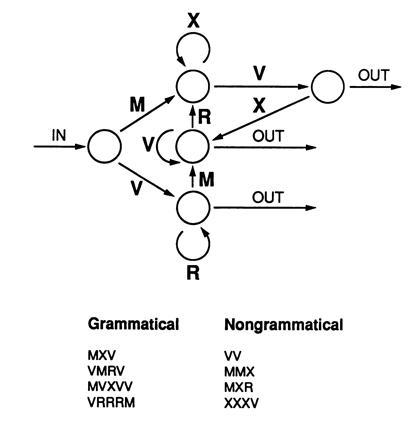Figure 4.

Artificial grammar learning (24). Letter strings are generated from a finite state rule system. Grammatical letter strings can be formed by traversing the diagram from the in arrow to the out arrows, adding a letter at each transition from one node to the next. In a typical experiment, 23 grammatical items are used for training, and a different 23 items are used for testing. An additional 23 nongrammatical test items are also used as foils for testing. These are generated by introducing an error in each of 23 different grammatical items. Subjects first study 23 grammatical letter strings one at a time. Five minutes later, they are informed for the first time that the letter strings they have just seen were formed by a set of rules. They are told that their task is to classify new letter strings according to whether they appear to conform to these rules. The 46 test items are then displayed one at a time, and subjects judge the item to be correct or incorrect (grammatical or nongrammatical).
